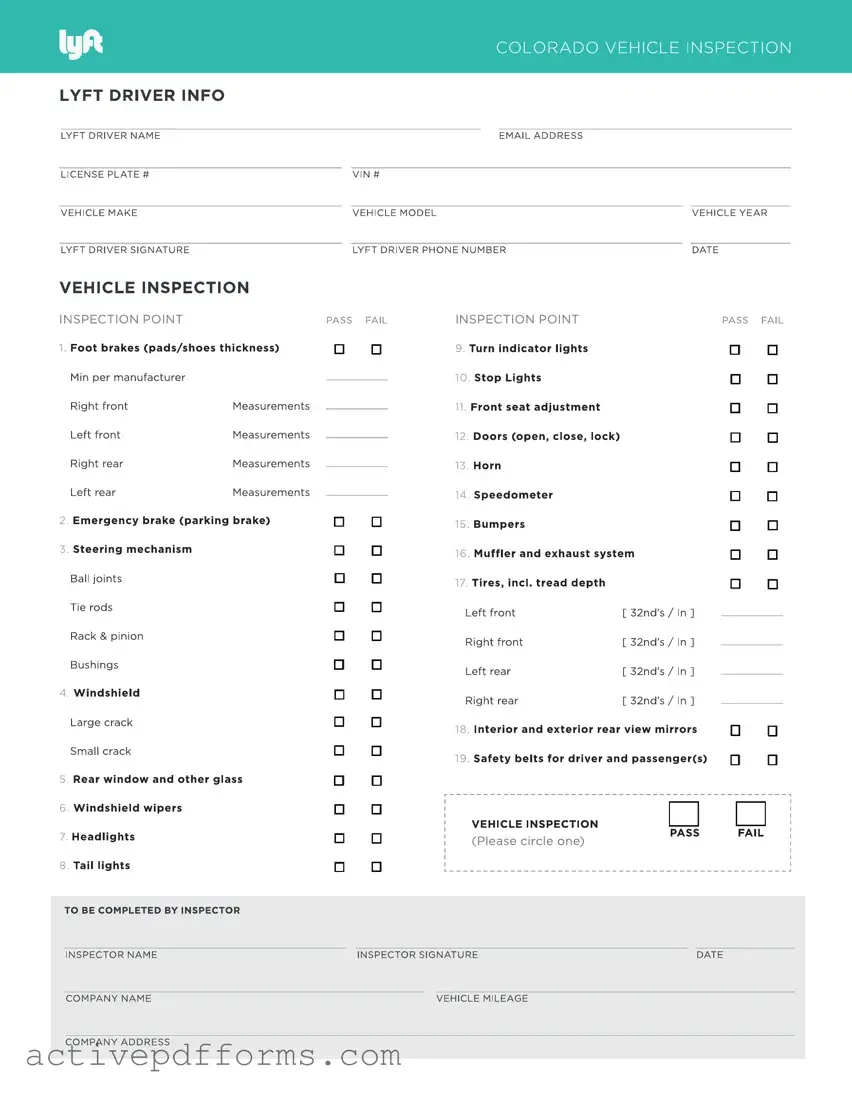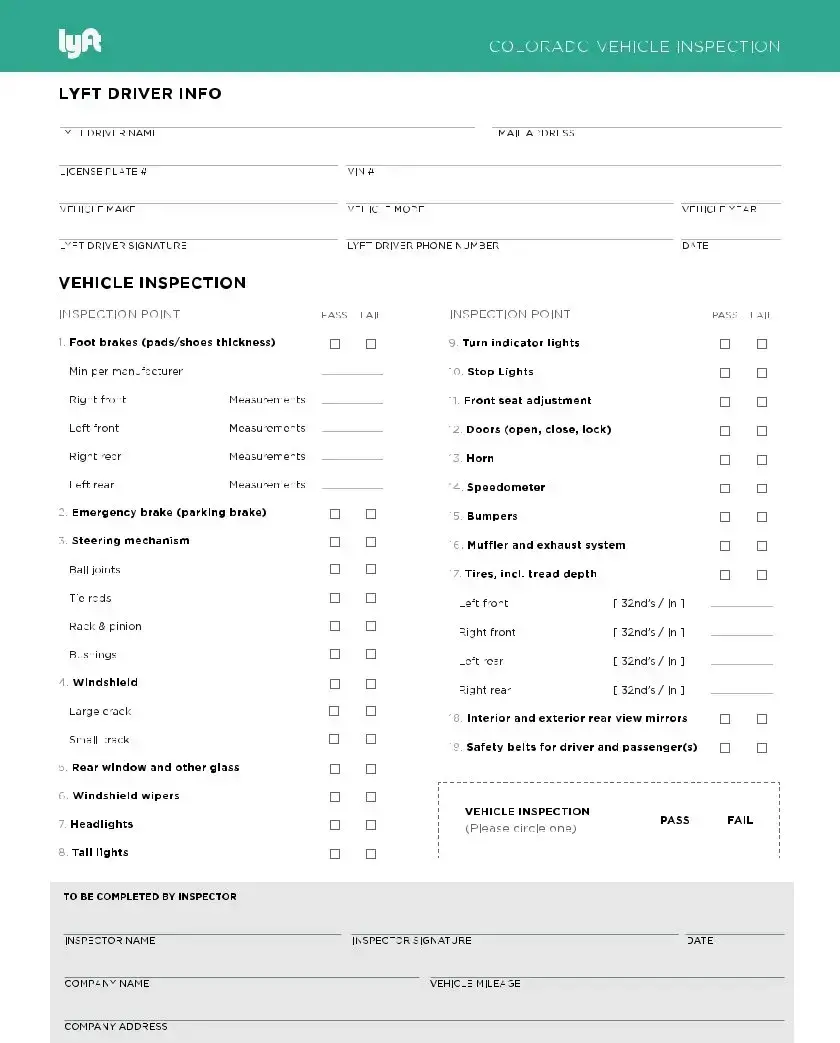Becoming a driver for Lyft encompasses more than just having a vehicle and a driver's license; it involves a critical step to ensure both driver and passenger safety through a comprehensive vehicle inspection. This essential procedure is encapsulated in the Lyft Inspection Form, a document designed to meticulously assess the condition of the vehicle intended for ride-sharing services. The form serves as a checklist, covering various safety aspects, from tires, brakes, and lights to more intricate systems such as the engine and transmission. It's not only about meeting legal requirements but also about adhering to Lyft's commitment to safety. The inspection must be conducted by a certified mechanic or at a designated Lyft inspection station, ensuring that all evaluations are unbiased and adhere to a standardized criterion. Upon passing the inspection, drivers are one step closer to officially joining the Lyft platform, signaling that their vehicle is up to the task of providing safe rides. This process underscores the importance Lyft places on the well-being of its community, firmly establishing trust and reliability at the heart of its service.

